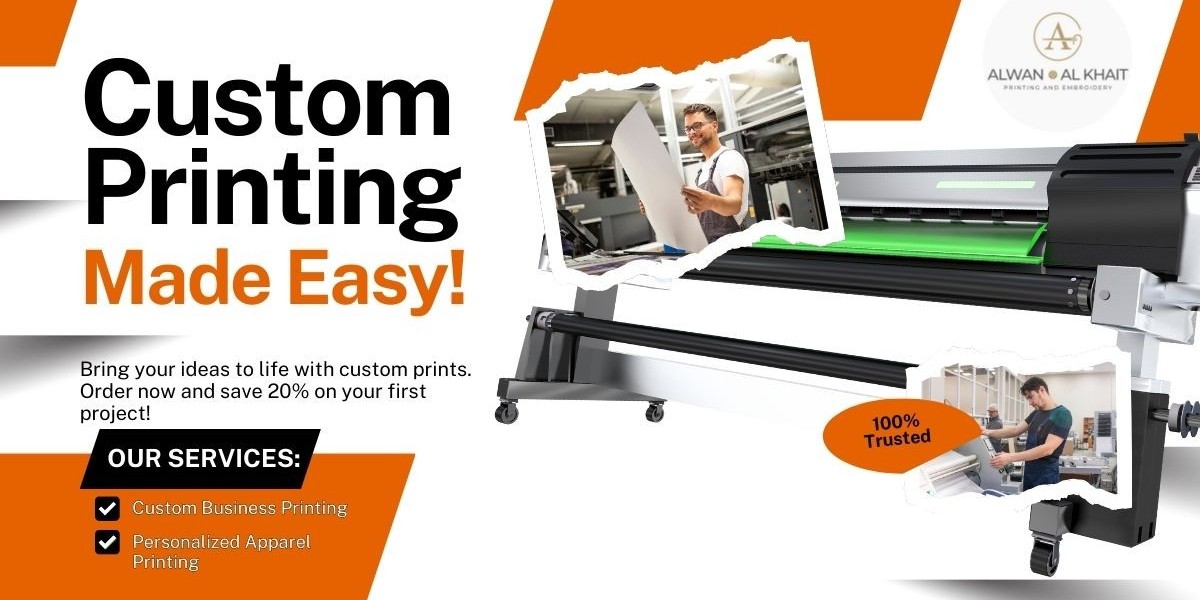The world of e-commerce continues to grow, and one of the most popular business models in 2025 is Print on Demand (POD). POD allows you to sell custom-designed products without worrying about inventory, fulfilment, or shipping. With little upfront cost and the flexibility to create unique products, it's a fantastic opportunity for entrepreneurs of all backgrounds. In this guide, we’ll walk you through the process of building a successful POD business and show you how to turn your creativity into profit.
What is Print on Demand?
Print on Demand is a business model where you design products and only print and ship them when a customer places an order. This eliminates the need for you to invest in inventory or manage logistics. Once the order is made, your POD provider takes care of production and fulfilment, handling everything from printing the design on the product to packaging and shipping it to the customer.
Benefits of Starting a Print-on-Demand Business
- Low Start-Up Costs: Since there’s no need to purchase inventory upfront, the cost to start a POD business is minimal. You only pay for products as they are ordered.
- No Inventory Management: You don’t have to worry about storing or managing inventory, which reduces overhead costs and eliminates logistical headaches.
- Creative Control: You have the freedom to design a wide range of products and make your business truly unique.
- Global Reach: Many POD platforms ship internationally, allowing you to sell to customers around the world without handling logistics yourself.
- Scalability: As your business grows, you can easily add new products and designs without worrying about scaling production or inventory management.
Step 1: Select a Profitable Niche
The first step in creating a successful POD business is selecting a niche. A niche allows you to target a specific group of customers, which can help you stand out from the competition. The more focused your niche, the more likely you are to attract loyal customers who resonate with your brand.
Some profitable POD niches to consider:
- Fitness & Wellness: Clothing, accessories, and gear tailored to health-conscious individuals.
- Pets: Custom pet products or items for pet owners.
- Sustainability: Eco-friendly and sustainable products that attract environmentally-conscious consumers.
- Personalized Gifts: Custom products like personalized mugs, t-shirts, and jewellery.
- Pop Culture & Hobbies: Designs inspired by TV shows, movies, gaming, music, or specific hobbies.
When choosing your niche, think about your interests and passions. If you create products you genuinely care about, it will be easier to market them to others.
Step 2: Choose Your Products
Now that you’ve selected a niche, it’s time to choose the products you want to sell. The good news is that POD platforms offer a wide variety of customizable products, from clothing to home décor. Some of the most popular POD products include:
- Apparel: T-shirts, hoodies, leggings, tank tops
- Accessories: Mugs, hats, tote bags, phone cases
- Home Décor: Wall art, throw pillows, blankets, candles
- Stationery: Notebooks, journals, planners, and stickers
Start by selecting a few core products that align with your niche and are likely to appeal to your target market. You can always expand your product range as your business grows.
Step 3: Create Stunning Designs
Your designs are what will make your products stand out in a competitive market. You can either create the designs yourself or hire a designer to bring your ideas to life. Some popular design tools include:
- Canva: Ideal for beginners, with easy-to-use templates for designing everything from t-shirts to posters.
- Adobe Illustrator: A professional tool for creating high-quality vector designs.
- Procreate: Perfect for digital artists creating unique, hand-drawn designs.
- Fiverr/Upwork: Hire freelance designers who specialize in creating custom designs.
When designing your products, ensure your designs are unique, visually appealing, and aligned with the preferences of your target audience. Pay attention to colour schemes, fonts, and the overall message of your designs.
Step 4: Find the Right Print on Demand Provider
Choosing the right POD provider is critical to the success of your business. You’ll want a provider that offers quality products, fast shipping, and easy integration with your e-commerce platform. Some popular POD platforms include:
- Printful: Offers a wide range of customizable products, excellent print quality, and seamless integration with platforms like Shopify, Etsy, and WooCommerce.
- Printify: Features multiple printing partners and a broad product selection at competitive prices.
- TeeSpring: Specializes in apparel and offers an easy-to-use platform for setting up an online store.
- Gooten: Known for its automated processes and variety of print-on-demand products.
- T-Pop: A European POD platform focused on eco-friendly products, which is great if your business values sustainability.
When selecting a provider, check the quality of their printing, shipping times, product offerings, and their ability to integrate with your chosen e-commerce platform.
Step 5: Set Up Your Online Store
With your products and designs ready, it’s time to set up your online store. Some popular e-commerce platforms for POD businesses include:
- Shopify: One of the best e-commerce platforms for POD, with easy integration with most POD providers. It’s user-friendly and offers a wide range of customization options.
- Etsy: Ideal for custom, handmade, and unique items. Etsy has a built-in audience looking for creative products, making it a great choice for POD.
- WooCommerce: A WordPress plugin that allows you to sell products directly from your WordPress site. It’s a flexible and customizable option.
- BigCommerce: Another solid e-commerce platform for POD with excellent features and integrations.
When setting up your store, focus on creating a professional and visually appealing design. Add high-quality product images and write compelling product descriptions to entice customers. Make sure your store is easy to navigate and optimized for mobile devices.
Step 6: Market Your Products
Marketing is essential to growing your POD business. Here are some strategies to help you drive traffic and increase sales:
- Social Media Marketing: Platforms like Instagram, Pinterest, and Facebook are great for showcasing visually appealing products. Share your designs, engage with your followers, and run targeted ads.
- Content Marketing: Start a blog or YouTube channel where you share valuable content related to your niche. For example, if your niche is fitness, you could create workout tips, motivational posts, and fitness-related content that ties back to your products.
- Paid Advertising: Run Facebook, Instagram, or Google ads to target your ideal customer demographic. These ads are highly customizable and can help drive targeted traffic to your store.
- Influencer Marketing: Collaborate with influencers in your niche to promote your products. Influencers can help you reach a larger audience and establish trust with potential customers.
- Email Marketing: Build an email list and engage with your subscribers through newsletters, promotions, and exclusive offers. Email marketing can drive repeat business and help build a loyal customer base.
Step 7: Fulfill Orders and Provide Excellent Customer Service
Once a customer makes a purchase, your POD provider will handle production and shipping. However, you’ll still need to ensure that your customers have a great experience. Provide excellent customer service by:
- Responding to inquiries quickly and professionally.
- Addressing any issues with orders, such as shipping delays or incorrect products.
- Offering returns or exchanges, if necessary, within the guidelines of your POD provider.
- Asking for customer reviews and using feedback to improve your products and service.
Step 8: Analyze and Optimize
As your business grows, use analytics tools (like Google Analytics or platform-specific insights) to track your store’s performance. Monitor traffic, sales, and customer behaviour to determine what’s working and what’s not. Use this data to adjust your marketing campaigns, improve product offerings, and optimize your store for better conversions.
Conclusion
Starting a Print on Demand business is an exciting and low-risk way to enter the world of e-commerce. With the right niche, designs, and marketing strategies, you can build a successful and sustainable online business. POD allows you to focus on your creativity and passion while the logistics are handled by your provider. Whether you’re a designer or just someone with great ideas, there’s no better time to start your POD business than today.
Take action now and begin your journey to building a thriving Print on Demand store!



